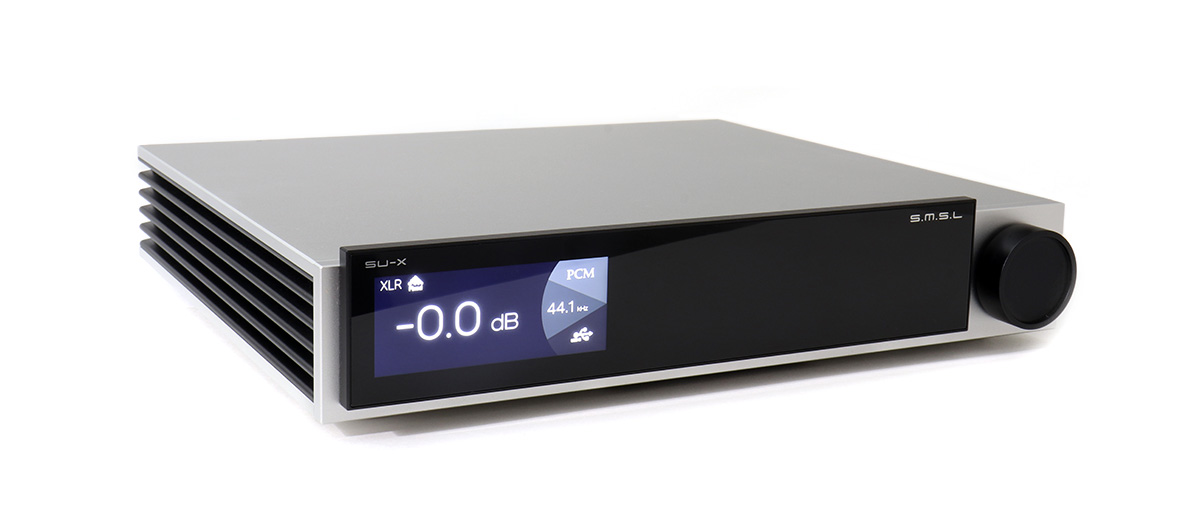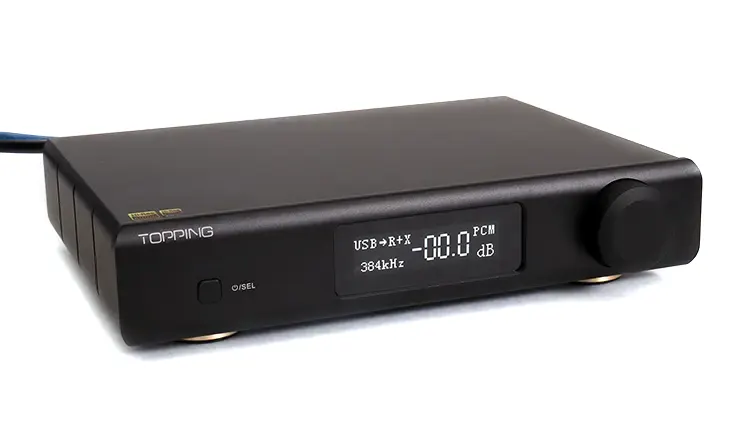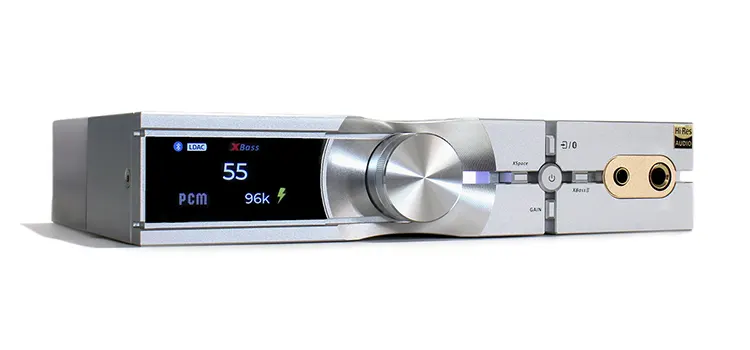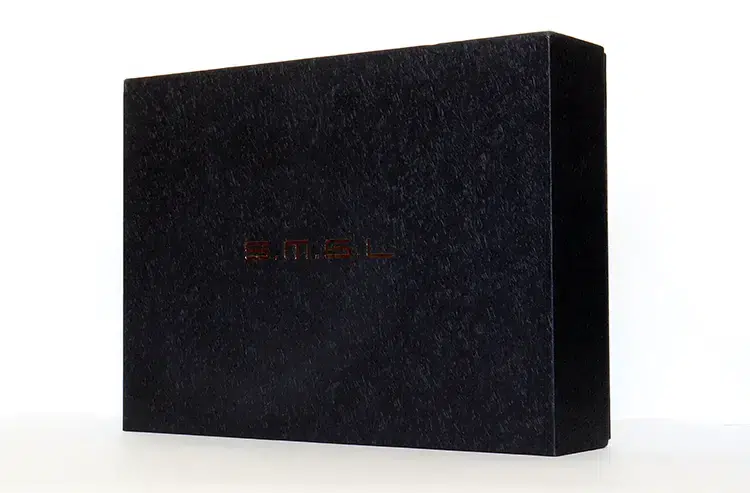Sound Impressions
The ideal pairing with the SU-X is with the SMSL SH-X desktop amplifier. We did get a hold of one for this review and a future writeup on that model will follow soon so stay tuned. I also used Topping’s A90. Both amps were fed through their XLR inputs, 5 volts.
The HIFIMAN Ananda Nano was used along with the Svanar. To get a different perspective I also used Meze Audio 99 Classics, Sivga’s SV023, and a pair of Dekoni Audio Blue planar headphones.
Timbre
I admire the natural timbre of the SMSL SU-X which to me is one of its best characteristics. It strikes a balance between smooth and ardent that presents the listener with quite an accurate translation of what’s in a recording.
The SU-X also tries to extract every detail within a recording and it does so successfully. A high amount of micro-dynamic representation is brought forth along with all the other elements in a coherent manner. The overall sonic signature is linear in frequency response and detail-rich.
Again, this is the second model I have had that uses Sabre’s latest chipsets and delivers a lean bass response that at times comes across as south of neutral. However, the cleanliness of the produced bass response is what makes it so enjoyable.
The midrange and treble frequencies are evenly produced with a smooth buttery texture, and sweet-sounding timbre that fall between musical and analytical.
Staging and Dynamics
The SU-X has a punchy, energetic signature combined with a very black background.
The soundstage it produces can place a note anywhere within the soundstage which is a considerably large one to boot. Depth, width, and height are all there and elements that need to remain in symmetry do so while other notes occupy a 3-dimensional space.
Some DACs and components in general lose definition and sharpness and smear the aura around sounds but not this DAC. The SU-X produces sharply defined auras around each element and smearing is minimal.
Synergy
Windows driver
For some reason, SMSL specifies that under Windows you need a driver but I can testify that it’s not so. I ran the SU-X under a Windows 10 and an 11 machine and on both occasions, the unit would even show up within the device manager.
Just in case I was missing something, I grabbed the available file from SMSL’s website and installed the driver listed on the page and it made no noticeable difference. Unless you’re on an ASIO setup I doubt you’ll even need the driver.
Amplifier Pairing
The SMSL analog outputs are set at 2.5 volts SE and 5 volts balanced with an ability to switch between a fixed or variable line-out. I went with a balanced output fixed line out and called it a day.
All my amps paired well with the SU-X, including my Topping A90, my iFi Audio ZEN CAN Signature, and my Asgard.
I mostly used the XLR outs whenever I could, however, the RCA also sounded good with just a small loss in SNR. The two port’s specifications are very close to each other.
The SU-X tends to bring forth an amplifier’s attack and staging performance along with maxing out its dynamic response. The specifications look as if they can max out most amplifier’s max performance levels.
Select Comparisons
Topping D90 III Sabre
Technical
The Topping D90 III Sabre is one of the best-performing DACs to come around in a while and uses a similar ES9039 dual DAC setup but doesn’t use massive toroidal core transformers which explains away the differences in size between these two models sporting similar hardware.
In the case of the D90 III Sabre, it uses an I/V conversion circuitry to supply power through its circuitry and keep noise down to a minimum.
The Topping model does run cool to the touch all the time, contrary to the SU-X. Perhaps all that beefed-up circuitry within the power section of the SU-X is what produces all that heat.
Both models are identical in capability when it comes to decoding digital formats. Both models do MQA, PCM, and DSD at the same rates. The IO section also seems to be similar.
Design
Topping managed to put similar performance within a smaller chassis in this case. Comparatively, the D90 III Sabre is half the size of the SU-X, half the weight, and it’s also more monotone in appearance. Or shall we say simple in appearance?
A black cabinet, a black volume knob, and one black push-to-activate button compose the front panel. The Topping logo and the button SEL markings are the only contrasting elements.
One plus the D90 III Sabre has going for it is the running temperature. It runs cool all the time which makes it suitable for scenarios in which the unit will be used for extended periods.
Performance
To compare both DACs sonically, I set the Topping D90 III Sabre at 5 volts on the XLR outputs to equal the output of the SU-X just to be fair. I also chose no filters or tone modes and set both units on similar settings.
The beefier power delivery system of the SU-X adds a layer of improvement, especially in the overall staging. The overall size seems larger and so does each element within the recordings.
The A90 variant is a bit more focused and projects a shorter, or panorama that’s not as tall but it can also micro-project within the imaging panorama.
Tonality overall is almost identical except that the D90 III Sabre is perhaps more introverted while the SU-X presents sound in a larger scope, size-wise.
They both present the listener with a realistic tonality and high levels of technicality ability in their own way.
iFi Audio NEO iDSD 2
Technical
My first NEO was almost exclusively used as a DAC and as a home audio hub since it offered up a great sonic performance, good IO capability, and silent operation free from clicks, pops, and turn-on or turn-off thumps.
The NEO iDSD 2 DAC section is the same one used in the original NEO that’s composed of the same 2000mips XMOS 16 core processing unit and custom Burr Brown chis with iFi’s custom firmware. Pure Wave and trench technology switching was also used.
They also litigated the situation many of their units have with volume control imbalance by using a step resistor volume knob. The volume knob itself is a high-quality knob and I do prefer it over the SMSL SU-X’s implementation but it mostly has to do with how they feel and how much play is on that shaft.
There’s one thing that the NEO iDSD 2 has going for it and that’s the Bluetooth 5.4 radio with aptX Lossless capability. The SU-X runs off the older 5.1 and it uses a 2.0 USB port versus the NEO’s 3.0 port. So there are two things the NEO iDSD 2 has going for it.
Design
I like the fact that with the NEO iDSD 2, you get to choose between a vertical or horizontal mount which gives the user better placement flexibility. Plus the NEO iDSD 2 is of a smaller stature overall.
The overall design is gorgeously done in silver and a color display occupies the left side of the front panel which orients itself according to the mounting position you choose.
Both models include a remote control and both units can project far enough to be used in any living room and from across any room so both can be used as home theatre center hubs successfully.
The overall appeal of the NEO iDSD 2 and one of iFi Audio’s main design goals was to produce a unit with totally silent operation, and iFi went to great lengths to make sure that was so.
They even used a silent line OLED display that doesn’t introduce any noise into the circuitry of its own.
Performance
If we were to just compare DAC sections, the NEO iDSD 2 has an increase in high-frequency extension more so than other iFi Audio comparative models.
However, against the SU-X it might come across as dark. They veered away from the warm tonality that their similarly equipped gear had and opted for a brighter signature but it’s a more relaxed top end.
Imaging and the overall panorama are similar in some ways when it comes to the soundstage size, however, the SU-X still produces a larger stage.
The NEO iDSD 2 might portray itself as having a heavier bottom end but in the end both present bass in a fast, speedy manner. But when that XBass II and the Xspace features are engaged, things change. I sometimes wished everything had XBass.
Our Verdict
The SMSL SU-X is a wonderful desktop DAC that performs admirably and would satisfy many ardent hobbyists and critics alike. It strikes a nice sonic balance between being analytical and musical.
It’s a solidly constructed piece and although some venting would have been purposeful, it certainly doesn’t disappoint in the sound quality production department.
The system menu features are plenty to keep you busy and entertained for a long time but perhaps the Bluetooth 5.1 might bum you out. However, if you bought the SU-X for the Bluetooth you missed the point. This DAC is a winner sonically in my book.
SMSL SU-X Technical Specifications
- Input: USB/ Optical/ Coaxial/ Bluetooth/ I2S/ AES
- Output: RCA/ XLR
- Line out amplitude: XLR 5.2Vrms / RCA 2.5Vrms
- THD+N: 0.00005%(-126db)(UN-WTD)
- Dynamic range: 135db (XLR) / 128db (RCA)
- SNR: 135db (XLR) / 128db (RCA)
- USB transmission: USB 2.0 Asynchronization
- USB compatibility: Windows 7/ 8/ 10/ 11(driver required) MAC OS 10.6 or above/ Linux distro (no driver needed)
- MQA decoder: USB/ Optical/ Coaxial/ AES
- MQA CD decoder: Optical/ Coaxial/ AES
- Sampling rates: USB PCM 44.1 to 768khz (32bit)/ DSD 2.8224 to 22.5792mHz (1bit)/ Optical Coax 44.1 to 192kHz (24bit)
- DOP: DOP256 USB/ DOP64 Optical Coax AES
- Bluetooth specifications
- LDAC 24-96kHz 990kbps/600kbps/ 330kbps
- aptX HD: 16bit/44.1kHz 576kbps
- aptX: 16bit/44.1kHz 352kbps
- SBC: 16bit/44.1kHz 328kbps
- AAC: 16bit/44.1kHz 320kbps
- Power consumption: 20W
- Standby power: 0.5W
- Size: 250 x 51 x 217 mm (WxHxD)
- Weight: 2.7kg/ 5.95lbs






